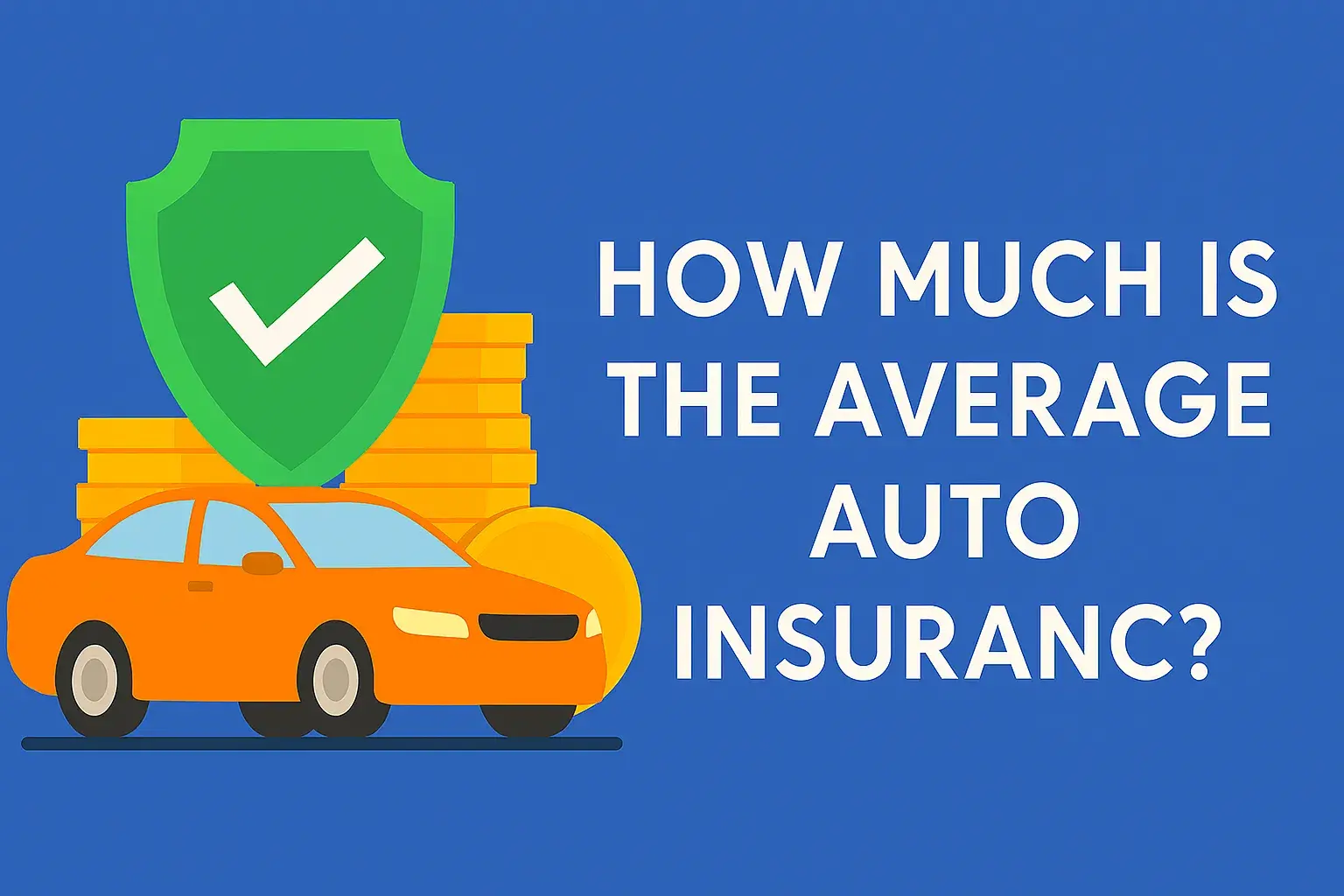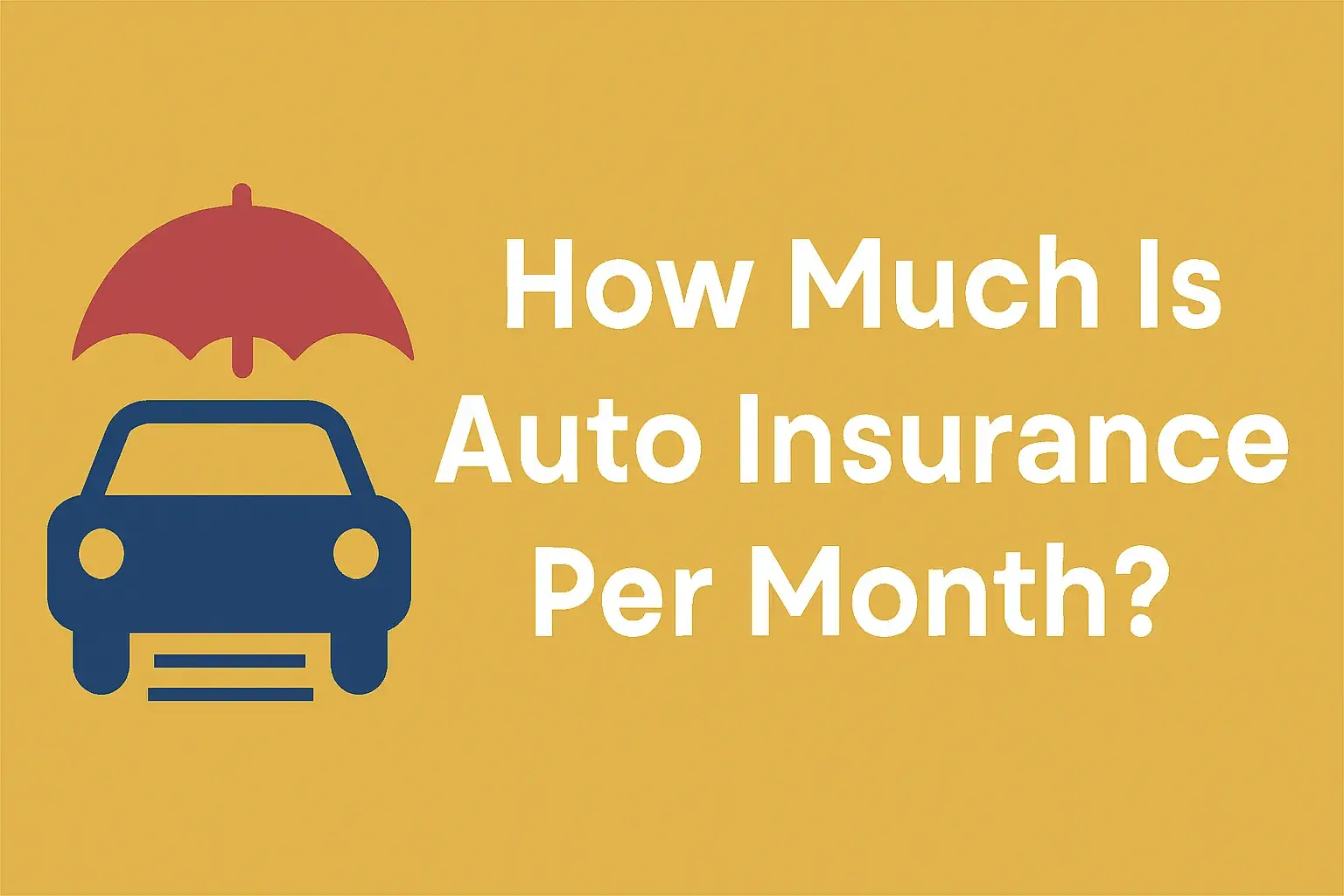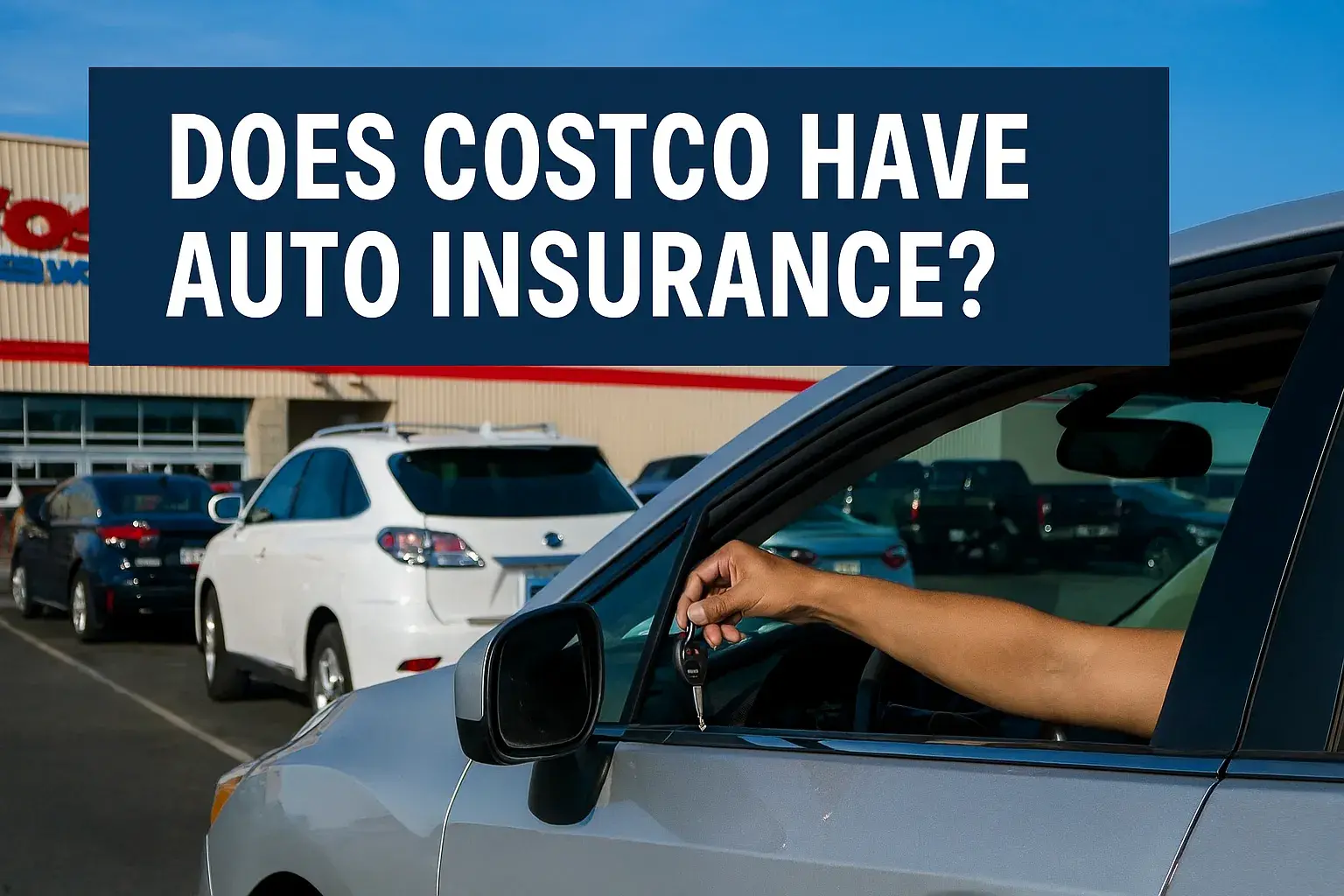11
Sep

Are you tired of that recurring monthly bill for your auto insurance feeling heavier than it should? You're not alone. Millions of drivers across the country feel the pinch of rising insurance costs, often assuming there's little they can do. But what if we told you that with a strategic approach, you could unlock significant savings without compromising your coverage? Learning how to lower auto insurance is not just a wish; it's a financial skill. This comprehensive guide is designed to be your roadmap. We'll demystify the factors that determine your rate, unveil an arsenal of actionable tips to reduce car insurance premiums, and expose common pitfalls to avoid. By the end of this article, you'll be equipped with the knowledge to confidently pursue affordable car insurance strategies and keep more of your hard-earned money in your pocket.
What is Auto Insurance & Why Do Costs Vary So Dramatically?
At its core, auto insurance is a contract between you and an insurance company. You pay a premium, and in exchange, the company agrees to pay for specific financial losses related to your vehicle as outlined in your policy. These can include damage from an accident, theft, or natural disasters, as well as liability for injuries or property damage you cause to others.
The reason your neighbor might pay half of what you do for a similar car boils down to risk. Insurance companies are in the business of assessing risk. They employ complex algorithms and actuarial data to predict the likelihood that you will file a claim. Your premium is the price of that risk. A higher perceived risk translates directly into a higher premium. This risk calculation is based on a multitude of personal and statistical factors, which we will break down next.
Top Factors That Affect Your Auto Insurance Premiums
Understanding what insurers look at is the first step toward controlling your costs. These factors are the levers you can often pull to influence your rate.
-
Your Driving Record: This is the single biggest factor within your control. A clean record with no accidents, speeding tickets, or DUIs signals to insurers that you're a safe bet. Conversely, violations and at-fault accidents mark you as a high-risk driver for years.
-
Your Credit-Based Insurance Score: In most states, insurers use a credit-based insurance score to predict risk. Statistically, individuals with lower credit scores tend to file more claims. Maintaining a good credit score is one of the most effective ways to save on auto insurance.
-
Your Age, Gender, and Marital Status: Statistically, young, inexperienced drivers (especially teens) are involved in more accidents. Rates are typically highest for this group and gradually decrease until around age 25. Gender and marital status also play a role, with married individuals often receiving lower rates.
-
Your Location: Urban areas with higher traffic density, greater rates of accidents, and more vehicle theft generally have higher premiums than rural areas. Even your zip code can significantly impact your rate.
-
Your Vehicle: The car you drive is a major factor. Insurers consider the car's value, cost of repair, safety record, and most importantly, its likelihood of being stolen. Sports cars and luxury vehicles are far more expensive to insure than minivans and sedans.
-
Your Coverage and Deductibles: The more coverage you buy and the lower your deductible (the amount you pay out-of-pocket before insurance kicks in), the higher your premium will be.
-
Your Annual Mileage: How much you drive directly correlates with your risk of being in an accident. Drivers with long daily commutes pay more than those who work from home or drive infrequently.
Proven Ways to Lower Auto Insurance: A Tactical Playbook
Now for the main event. Here are the best methods to cut auto insurance costs, backed by industry expertise.
1. Shop Around and Compare Insurance Providers
This is the golden rule. Loyalty rarely pays in the insurance world. Rates can vary wildly between companies for the same driver and vehicle. Don't just renew your policy year after year without getting competing quotes. Make it a habit to compare insurance providers every 2-3 years. Use online comparison tools, independent insurance agents, or contact companies directly. This single action can save you hundreds of dollars annually.
2. Bundle Your Home and Auto Policies
Insurers love customers who hold multiple policies with them. Bundling your auto and homeowners (or renters) insurance with the same company almost always results in a significant discount, often between 5% and 25%. This is one of the easiest insurance discounts and savings to secure.
3. Increase Your Deductibles
Your deductible is a powerful lever. Opting for a higher deductible (e.g., moving from $500 to $1000) will immediately reduce your monthly car insurance bill. The trade-off is that you'll have to pay more out-of-pocket if you have a claim. This strategy is best for safe drivers with a solid emergency fund who can comfortably handle the higher deductible if needed.
4. Maintain an Impeccable Driving Record
This is a long-term strategy with massive payoffs. Avoiding accidents and traffic violations is the most straightforward path to lowering auto insurance rates. Safe drivers qualify for the best rates and coveted "good driver" discounts. Defensive driving isn't just safe; it's profitable.
5. Improve Your Credit Score
Since your credit-based insurance score is a major rating factor in most states, improving your credit health is a powerful financial move. Pay your bills on time, keep your credit card balances low, and avoid opening unnecessary new credit accounts. As your credit score improves, be sure to inform your insurer and ask for a re-rating—it could lead to a lower premium.
6. Leverage Telematics and Safe Driver Apps
Usage-Based Insurance (UBI) programs, like Progressive's Snapshot or Allstate's Drivewise, use a mobile app or a plug-in device to monitor your driving habits. They track mileage, braking, speed, and the time of day you drive. If you're a safe driver, you could earn a substantial discount based on your actual behavior, making this one of the most modern cheap auto insurance tips.
7. Take an Approved Defensive Driving Course
Completing a state-approved defensive driving course can demonstrate your commitment to safe driving. Many insurers offer a discount for completing these courses, which are often available online. This is especially beneficial for older drivers looking to refresh their skills or those seeking to offset a minor violation.
8. Ask About Every Possible Discount
Insurers offer a plethora of discounts, but they won't always apply them automatically. It's your job to ask. Common discounts include:
-
Good Student Discount: For young drivers maintaining a B average or higher.
-
Military Discount: For active duty, veterans, and sometimes their families.
-
Senior Discount: For older drivers who have completed a mature driver course.
-
Professional Affiliation Discount: For members of certain organizations or alumni groups.
-
Paperless/Auto-Pay Discount: For going green and setting up automatic payments.
9. Drive Less and Qualify for Low Mileage Discounts
If your commute has changed—perhaps you now work from home, are retired, or use public transportation—you may qualify for a low-mileage discount. Report your reduced annual mileage to your insurer to see if you can save.
10. Choose Your Vehicle Wisely
Before you buy your next car, consider its insurance cost. High-performance vehicles, flashy sports cars, and models that are frequently stolen come with exorbitant premiums. The cheapest cars to insure are typically mid-sized sedans, minivans, and SUVs with strong safety ratings and low repair costs. Resources like the Insurance Institute for Highway Safety (IIHS) can help you choose an insurance-friendly vehicle.
State Laws & Regulations Impacting Auto Insurance Costs
Insurance is primarily regulated at the state level, which means the rules and available affordable car insurance strategies can differ depending on where you live.
-
Minimum Coverage Requirements: Each state sets its own minimum liability coverage limits. While opting for just the minimum can lower your premium, it often leaves you dangerously underinsured in a serious accident.
-
No-Fault vs. Tort States: "No-fault" states require your own insurance to pay for your injuries regardless of who caused the accident, which can affect the cost and structure of policies.
-
Credit Score Restrictions: A few states (like California, Massachusetts, and Hawaii) have placed restrictions on how insurers can use credit information to set rates.
-
Discount Mandates: Some states require insurers to offer specific discounts, such as for completing defensive driving courses.
Always be aware of your state's specific laws, as they define the playing field for your insurance shopping.
Common Mistakes to Avoid When Trying to Lower Auto Insurance
In the quest for savings, some actions can backfire spectacularly.
-
Dropping Essential Coverage: Slashing your liability limits or dropping comprehensive/collision coverage on a valuable car to save money is extremely risky. One at-fault accident could lead to financial ruin.
-
Underestimating Your Value: Don't focus solely on the monthly premium. Consider the company's financial strength, customer service reputation, and claims handling process. The cheapest policy is a bad deal if the company is a nightmare to work with when you need them most.
-
Lying on Your Application: Misrepresenting your address, mileage, or drivers in your household is fraud. It can lead to a denied claim and policy cancellation.
-
Letting Your Policy Lapse: A gap in insurance coverage is a major red flag for insurers and will likely result in higher premiums when you try to get a new policy.
Expert Strategies for Long-Term Auto Insurance Savings
Think beyond quick fixes. Adopt these habits for sustained savings over your driving lifetime.
-
Build a Relationship with an Independent Agent: A good independent agent who represents multiple companies can do the shopping for you and provide personalized advice.
-
Pay Your Premium in Full: If you can afford it, pay your six-month or annual premium upfront. Most companies charge monthly installment fees.
-
Review Your Policy Annually: Before each renewal, review your policy. Does your car's actual cash value still justify having comprehensive coverage? Have your life circumstances changed? An annual review ensures you're not over-insured or missing new discounts.
-
Consider the Actual Cash Value: As your car ages and depreciates, the cost of comprehensive and collision coverage may eventually exceed the value of the car itself. When the annual premium for these coverages exceeds 10% of your car's value, it may be time to consider dropping them.
Conclusion: Take Control of Your Auto Insurance Costs
Lowering your auto insurance premium is not a matter of luck; it's a matter of strategy. By understanding the rating factors, actively shopping around, leveraging every available discount, and maintaining a safe driving record, you can achieve significant, lasting savings. The best methods to cut auto insurance costs involve being a proactive, informed consumer.
Your Call to Action: Don't put it off. Block out 30 minutes today to start implementing these strategies. Get at least three new quotes online, call your current insurer to ask about unapplied discounts, and commit to being a safer driver. Your wallet will thank you.
Frequently Asked Questions (FAQ)
What is the best way to lower auto insurance quickly?
The fastest way to see immediate savings is to compare insurance providers by getting quotes from at least three different companies. This can often yield results in minutes. Additionally, asking your current insurer about unapplied discounts, like those for bundling or auto-pay, can lower your bill instantly upon renewal.
Do car insurance companies really give discounts for good grades?
Yes, most major insurers offer a "good student discount," typically for full-time students under 25 who maintain a B average or higher. This discount rewards responsibility and the statistical correlation between good grades and safer driving habits.
How much can bundling home and auto insurance save?
Bundling policies can typically save you between 5% and 25% on your total premium. The exact amount varies by insurer, your location, and your risk profile, but it is consistently one of the most substantial discounts available.
Is raising my deductible a good idea?
Raising your deductible is an effective way to reduce your monthly car insurance bill, but it's a trade-off. It's a good idea only if you have enough savings to comfortably cover the higher out-of-pocket cost (e.g., $1000 or $2000) in the event of a claim.
What cars are the cheapest to insure?
The cheapest cars to insure are generally mid-sized sedans, minivans, and small SUVs with high safety ratings, low repair costs, and low theft rates. Think models like the Honda CR-V, Subaru Outback, and Toyota minivans. Always check insurance costs before buying a new vehicle.
Does credit score really affect auto insurance rates?
In most states, yes. Insurers use a credit-based insurance score as a key factor in determining premiums. Statistical data shows a strong correlation between lower credit scores and a higher likelihood of filing claims. Maintaining good credit is a crucial part of securing the best rates.
How do telematics and usage-based insurance help lower premiums?
Telematics programs (like those from Progressive, State Farm, or Allstate) monitor your actual driving behavior—mileage, braking, speed, and time of day. By demonstrating safe driving habits through the app or device, you can earn a significant discount based on your real-world performance rather than general demographic data.
Can military or senior drivers get extra discounts?
Absolutely. Most insurers offer exclusive discounts for active military personnel, veterans, and retirees. Similarly, many companies provide discounts for senior drivers, especially those who complete a certified mature driver safety course.
Will switching insurance companies help me save money?
Very often, yes. Insurance rates are highly competitive, and a company that offers you a great rate today might not be the cheapest option in two years. Switching insurers is one of the most reliable ways to save on auto insurance and is a standard practice for cost-conscious consumers.
How often should I shop around for new auto insurance quotes?
Experts recommend shopping for new quotes every two to three years, or whenever you have a major life change like moving, buying a new car, getting married, or adding a teen driver. This ensures you are always getting the most competitive rate for your situation.




